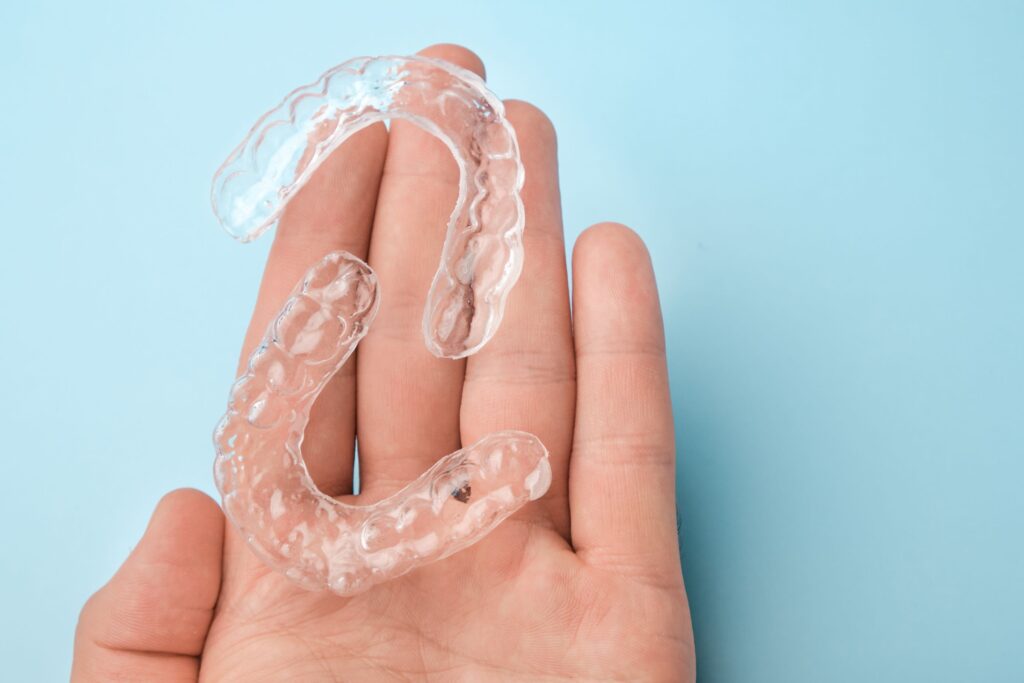
Although braces are the tried-and-true solutions for straightening smiles, many patients choose Clear Aligners because they’re considered more comfortable and discreet. This treatment relies on transparent plastic trays that fit snuggly over your teeth to reposition them more gently than traditional orthodontics.
However, you must wear them for 20 to 22 hours daily to keep your pearly whites from reverting to their starting positions. That gives any germs and debris on your teeth and gums plenty of time to flourish and cause issues. Continue reading to learn about 3 potential complications with Clear Aligners and how to avoid them!
Concern #1: Toothaches
The smooth plastic trays on your teeth are considered less invasive than braces because they’re removable, so they don’t impact your daily habits, such as your dental hygiene routine or diet, the same way. Plus, there are no harsh metal brackets or wires to cut the tender tissues inside your mouth.
However, any treatment that places enough pressure on your teeth to shift them has the potential to cause aches and pains. This is especially true when you begin wearing a new set of Clear Aligners. Every one to two weeks, your dentist will provide the next set in your series to account for the ongoing movement of your teeth, which can cause soreness until your teeth adjust. You can usually safely reduce symptoms with over-the-counter medications, like Tylenol or ibuprofen.
Concern #2: Speech Impediments
Clear Aligners are designed to fit like a glove, but they still have a certain thickness that can take some time to adjust to, especially when you’re new to this treatment. Until your tongue acclimates to their dimensions, you might develop a slight lisp, slur, or other speech impediment, particularly regarding “s” or “th” sounds.
Thankfully, this effect is usually temporary and seems to impact very few people. For instance, an estimated 93% of patients with these transparent trays do not develop any persistent speech impediments. If you’re struggling to enunciate certain words, it might help to practice speaking or reading out loud to yourself at home until you feel more comfortable and confident in your abilities.
Concern #3: Cavities
Tooth decay is another common oral issue that you might develop during this orthodontic treatment. Your trays are inserted most of the day and night, trapping leftover food, germs, plaque, and other debris against your teeth and gums. This allows bacteria to penetrate your enamel and erode the material, causing cavities that require treatment before they can progress.
To prevent this, you should remove your Clear Aligners both morning and night to thoroughly brush and floss your teeth. You can also scrub your trays with a soft-bristled toothbrush and plain dish soap that isn’t likely to damage the material. Be sure you rinse them off before reinserting them to continue your day or evening.
If you’re still worried about oral issues with Clear Aligners, you can consult your dentist to learn more about how to protect and preserve your smile during treatment!
Meet the Author
Dr. Bo Tran enjoys getting to know patients to help them build and maintain beautiful, healthy smiles. He earned his dental degree from the Midwestern University Glendale Campus, where he received the Golden Hand Award. Today, he proudly offers a comprehensive menu of services, including Clear Aligners, to meet all your needs under one roof. His compassionate approach is paired with state-of-the-art equipment to deliver comfortable, accurate treatment results you can trust. You can request an appointment on the website or call (602) 944-7199.
